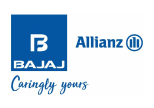Car Dashboard Warning Lights: What They Mean & What to Do
Understand Dashboard Alerts & Take the Right Action
Modern cars are smarter than ever, and like our bodies give us signals when something’s wrong, so do cars. Your dashboard warning lights are your car’s way of saying, “Hey, something needs attention!”.
Understanding what these lights mean and how to respond can help you prevent costly repairs and ensure safety on the road.

Key Highlights
-
Red = immediate attention, Yellow = caution, Green/Blue = informational.
-
Common warning lights include: Engine Check, Oil Pressure, Battery, Coolant Temperature, Brake System, ABS, Airbag, and Seat Belt reminders.
-
For red warnings, pull over safely and call for help; for yellow, schedule servicing soon.
🔴🟡🟢 Dashboard Warning Light Colors & What They Signify
Think of your car’s dashboard lights like traffic signals:
🔴 Red usually means stop immediately and address the issue. You’re supposed to stop your car somewhere safe and call for a mechanic.
🟡 Yellow or Amber mean caution. Something might be off with the car, so you need to take it for servicing soon.
🟢 Green or blue color is generally informational. Systems are activated and working fine. For instance, your car’s cruise control or high beams etc.
Most Common Dashboard Warning Lights
-
Engine Check Light
The check engine light means that one of the many sensors monitoring your car has noticed a problem with the engine. It can be anything from a spark plug fault to the failure of something major, such as the intake manifold or low compression.
Action: Don’t ignore it. Get a diagnostic scan done to pinpoint the issue.
-
Oil Pressure Warning Light
This red light, shaped like an oil can, indicates low pressure. It could indicate that your car is low on oil or has an oil pump problem.
Action: Check oil level. If low, top up. If the light stays on, don’t drive—call for help.
-
Battery Warning Light
Red in colour and battery-shaped, this light signals a problem with your charging system. The usual suspects are a failing alternator, loose cables, or a worn-out battery. Repairing it immediately will help your car's electrical systems to function properly.
Action: Turn off non-essential electronics (AC, music) and head to the nearest service station.
-
Coolant Temperature Warning Light
If you see a little thermometer pop up in your dash, your car is probably overheating. Your car’s engine is overheating due to coolant issues, failed thermostat, or radiator problems.
Action: Pull over safely. Wait for the engine to cool down before opening the bonnet. NEVER open the coolant cap or radiator cap. The pressurized coolant can spray out and cause severe burns.
-
Brake System Warning Light
If you see an exclamation mark with a circle around it in your dash, either your brakes need replacing or your handbrake is on.
Action: Check the handbrake. If released and the light persists, get the brakes checked immediately.
-
ABS (Anti-lock Braking System) Warning Light
The ABS warning light does not signal a failure of the physical brakes. Instead, this signals an issue with the anti-lock brake system.
Action: Safe to drive cautiously, but get the system inspected.
-
Airbag Warning Light
The Airbag warning light indicates that there is a problem with the airbag system, which means the airbags won’t deploy in time.
Action: Don’t delay. Get this checked as it directly affects passenger safety.
-
Seat Belt Reminder Light
This light reminds you to fasten your seatbelt before driving. It's crucial for your safety and is often accompanied by a chime.
Action: Buckle up!
Preventive Measures to Avoid Warning Lights
-
Regular Vehicle Maintenance
Adhere to your vehicle's recommended maintenance schedule, including oil changes, tyre rotations, and brake inspections. Regular check-ups can prevent many common issues that trigger dashboard warning lights.
-
Routine Fluid Level Checks
Regularly inspect your engine oil, coolant, brake fluid, and transmission fluid levels. Keeping these fluids at the correct levels can prevent many problems from arising.
-
Tire Maintenance
Monitor tyre pressure to ensure it’s within the recommended range. Check wear and tear in your tyre and change it after every 8 years or 50,000 KM.
-
Check Your Battery
Old batteries usually fail during colder months and during monsoon season.
Dashboard warning lights are your car’s built-in early warning system. Do not ignore them at any cost. Understanding what each means and responding the right way at right time is necessary for all drivers.














































